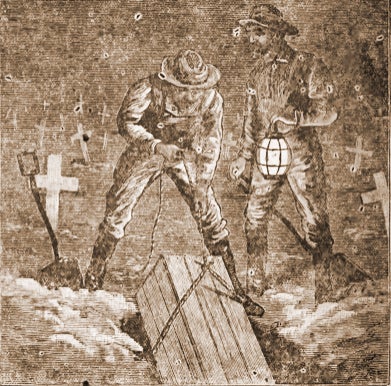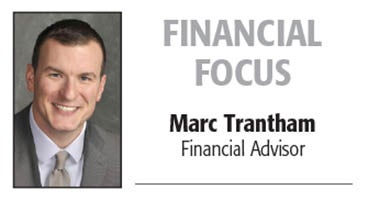Age of the body snatchers
Published 3:13 pm Wednesday, November 8, 2023
|
Getting your Trinity Audio player ready...
|
By Jadon Gibson
Contributing columnist
The 1800s brought an increased interest in the medical profession with medical schools increasing in size and number.
English writer Mary Shelley is best known for her horror novel “Frankenstein,” or the secondary title “Modern Prometheus,” in 1818. With a growing interest in the human body in the 1800s there was a marked increase in grave robbing in North America, Europe and other parts of the world.
Daniel Rudolph committed suicide in Topeka, Kansas, in late 1879 and his body was shipped to Sugar Grove, Ohio, for burial. Grave robbing was at epidemic proportions in Ohio at the time because of the numerous medical schools located there. Several individuals at Rudolph’s funeral noticed three or four strangers prowling around the graveyard after the interment. The overseer of the graveyard, they were called sextons at the time, was aware of the increased incidence of grave robbing and made it a point to visit the grave during the next two nights.
Just before midnight on the second night he spotted three human forms near the new grave as he approached. The moon shone bright as he neared the fencing and it enabled him to see a pile of dirt that the men had shoveled from the grave. He knew they were grave robbers and could tell by the size of the dirt pile their mission was nearly complete.
“Hey, what’s going on here?” the graveyard overseer shouted before discharging his pistol into the air several times. He didn’t want to make himself a target should they be armed, so he remained undercover. He knew they would either take to their heels or if armed, they may force the issue with him. As he hoped they quickly ran into the darkness.
In the village of Gann, Ohio, near the same time three men were attempting to rob a grave when their shovel struck a bomb of sorts that had been placed atop a concrete slab above the casket. The device, which was called a torpedo in the newspapers of the day, was devised to prevent the grave from being robbed and to discourage grave robbers. One of the men was killed by the blast and another suffered a broken leg. The third who was assigned to watch hoisted his comrades into their horse-drawn sleigh and took flight.
The Ohio General Assembly passed a measure the following year legalizing human dissection in the state’s medical schools. It was a paradoxical situation as the public opposed the practice of human dissection yet expected medical practitioners to be well trained. Bodies were needed for study and dissection. Lawmakers refused to pass laws that would permit medical schools to use unclaimed bodies. Medical schools would have to discontinue dissection or bodies would have to be procured through grave robbery. Does this remind you of the great Frankenstein movies of the past? Frankenstein was comprised of parts from more than one body.
An investigation of these thefts in Ohio suggested as many as 5,000 graves were disturbed and bodies stolen for anatomical instruction during the 1800s. The practice was not unique to Ohio as all areas with medical schools needed cadavers.
“Bodies are buried by day and forbidden resurrectionists dig them up by night,” the Ohio State University Journal reported in a release Feb. 17, 1871.
“As the medical colleges are beginning winter terms every good citizen would do well to be on the alert to prevent grave robbing.
“The trustees of Ohio State University have appropriated $40 for hauling dead horses, cows and other animals too large for the students to carry to the zoology laboratory,” the Columbus paper reported. “These snatchers are much less to be feared than those who take corpses for medical colleges.”
Dr. Frederick C. Waite said it was a misconception that grave robbing was a normal part of life for medical students but it was a practice at times. Some heard doctor’s stories of bold adventure and hair-breadth escapes while robbing graves during the time they were in medical school.
Jadon Gibson, a graduate of Caney Junior College (now Alice Lloyd College) and the University of Kentucky now resides in Harrogate, Tennessee. Thanks to Lincoln Memorial University, Alice Lloyd College and the Museum of Appalachia.







